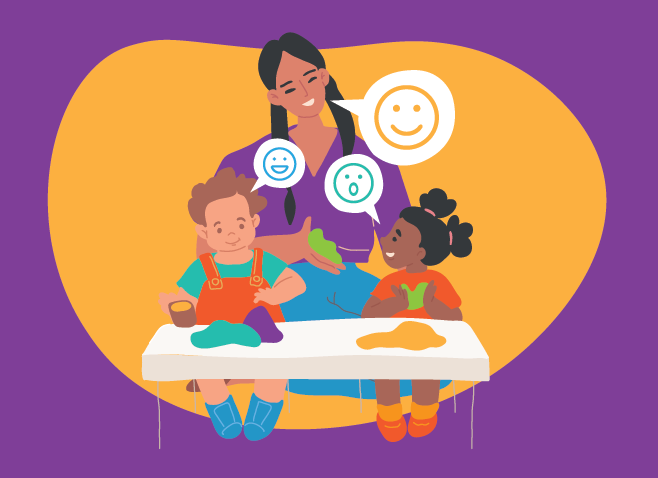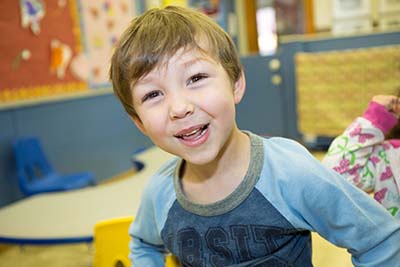LENA launched an initiative in 2021 to bring its “talk pedometer” technology and practice-based professional development to early childhood educators in Washington, D.C. As an important part of the initiative, LENA’s research team worked with partner organizations to conduct an evaluation assessing potential links between participation in LENA Grow and children’s social-emotional development.
Results show that participating children experienced significant increases in all domains of the Devereux Early Childhood Assessment (DECA), including Initiative, Self-regulation, and Attachment/Relationships, as well as Total Protective Factors.
“These are very encouraging results,” said Dr. Jill Gilkerson, LENA’s Chief Research and Evaluation Officer. “Researchers have known about the links between social-emotional development and language experience for some time, but to empirically demonstrate this relationship through a professional development program that’s solely focused on interaction is an important next step.”
The Esther A. and Joseph Klingenstein Fund supported the project.
LENA Grow and DECA: The Results
In total, 103 children’s LENA recordings and DECA assessments were analyzed. The children participated in LENA Grow either at Educare D.C. Early Head Start partner programs or AppleTree Schools, wearing LENA devices at school once weekly for approximately 10 weeks. The resulting reports then gave the children’s teachers insights into each child’s language environment during strengths-based, data-driven coaching sessions intended to increase interactive talk. Children ranged from approximately 12 to 66 months of age at baseline.
“We were pleased to see big talking increases,” said Dr. Abby Carlson, Director of Research and Impact at the AppleTree Institute for Education Innovation, “and it was even more exciting to see children’s social-emotional gains.”
DECA increases in all domains
On average, participating children showed significant pre/post increases on all DECA domains, with the largest increases and highest effect size coming in the domain of Attachment/Relationships, where children went from the 36th percentile to the 61st percentile (see Figure 1). The DECA tool describes children as fitting into one of three categories: Area of Need, Typical, or Strength. In all four DECA domains, participating children were more likely to move up one category than regress. In the domain of Total Protective Factors in particular, children were 10 times more likely to move up a category than to regress.
Dr. Carlson said, “Anecdotally, visiting classrooms and listening to coaching sessions, we saw that a big part of this program was building relationships between teachers and children. This is always important but felt especially powerful during our first full year back in school after COVID. The proof we see in these results reinforced what we were seeing and really brought home the value of using LENA Grow in our classrooms.”
Increases in conversational turn rates and other LENA measures
Children also experienced increases across all LENA measures, including conversational turns, child vocalizations, and adult words. As is typical, the largest increases came for those children who started the program experiencing the least amount of interactive talk (See Figure 2). For children coming into the program experiencing fewer than 15 conversational turns per hour, conversational turn rates more than doubled, increasing on average from nine to 19 per hour.
Higher-talk children, those entering the LENA Grow program already experiencing at least 15 conversational turns per hour, experienced more modest increases across all three LENA measures. However, they nevertheless experienced significant increases in DECA scores.
Dr. Gilkerson said, “This suggests that no matter how much interactive talk a child is experiencing, even if it’s already a lot, they can still benefit socially and emotionally when their teachers participate in LENA Grow.”
Positive results for older children, too
In this analysis, there was a balance of children’s ages, with comparable numbers of children above and below 3 years of age. The analysis team looked for any age dependence in the impact on social-emotional learning (SEL), and they were excited to find comparable gains for infants, toddlers, and preschoolers alike.
The big picture: LENA Grow, conversational turns, and social-emotional health
Around the same time LENA began this study, researchers at the Pontifical Catholic University of Chile used LENA technology to publish findings showing a causal link between conversational turns at 18 months of age and social-emotional competencies at 30 months of age. That paper, published in the journal Developmental Science, marked the first peer-reviewed study to demonstrate a link between conversational turns and social-emotional development using LENA.
As Dr. Gilkerson put it at the time, she found the results encouraging because they suggested that “interventions focused on early language interaction could directly influence social-emotional development.”
Now, that very suggestion has been borne out by the present analysis. In addition to the cognitive and language benefits that LENA and independent evaluations have previously seen in LENA Grow, there’s strong evidence the program may give children’s social-emotional development a boost as well.







